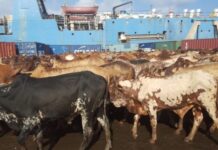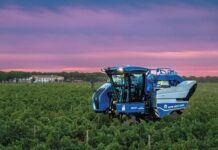Danie Kotze is a cattle farmer in the Kalahari Desert, Namibia where in 1996 he bought three rare Dexter breeds, which have since grown to a herd of 130.
Research shows that the Dexter cattle breed, which is of Irish origin, is a very hardy and healthy breed that calves easily.
They thrive on marginal land and are very suitable for organic production and grass, surviving with ease on hot temperatures of above 40°C.
Kotze’s has a vast farm of 7 665ha in the Kalahari Desert, which is predominantly a sheep rearing area.
“This is mainly a sheep area, but I have quite a lot of cattle because I have a very big problem with guys stealing my sheep at night,” Kotze said.
“From 1996, I got into the Dexter breed because a neighbour bought two of them for his daughter when she was born, but she died from meningitis and he lost interest in the breed and asked me if I was interested, so I bought two cows and a bull from him. I now have a herd of 130.”
“I use them for milk for our own drinking and we also produce our own butter and cream. I have three people from Oxford University doing PhD research on the farm and we put the milk into their rooms and they then enquired where we got such lovely milk from.
“We also slaughter them, and they have very nice meat. They are a smaller unit so their steaks are more affordable. Every week I sell one or two at this time of the year,” he added.
According to the Irish Dexter Cattle Society, the Dexter breed was once known as the poor man’s cow because of its ability to adapt to varying and extreme climatic conditions.
As they are not as demanding on land as bigger breeds are, Kotze is able to keep more on his land which has savannah grass.
After the rains, the grass in the Kalahari becomes dry and unpalatable but the Dexters are able to harvest their own food.
“They have adapted to the environment and are quite versatile,” Kotze continued.
“We have come from a four-year drought and I have sold off my other cattle but I haven’t sold the Dexters. Sometimes there are very small amounts of grass left on the land and the Dexters, being low maintenance, survive and flourish whereas a lot of others die in the drought.
“We got some nice rain the previous season and therefore we have a lot of grass now. The Dexters help me to utilise that by producing very good quality beef.
“I get a lot of telephone calls about them and I get asked a lot to sell them, but at this stage I need more of them to utilise the good grass and food that I have.
“I want to put my grass into protein. In our country we still eat a lot of meat.”








